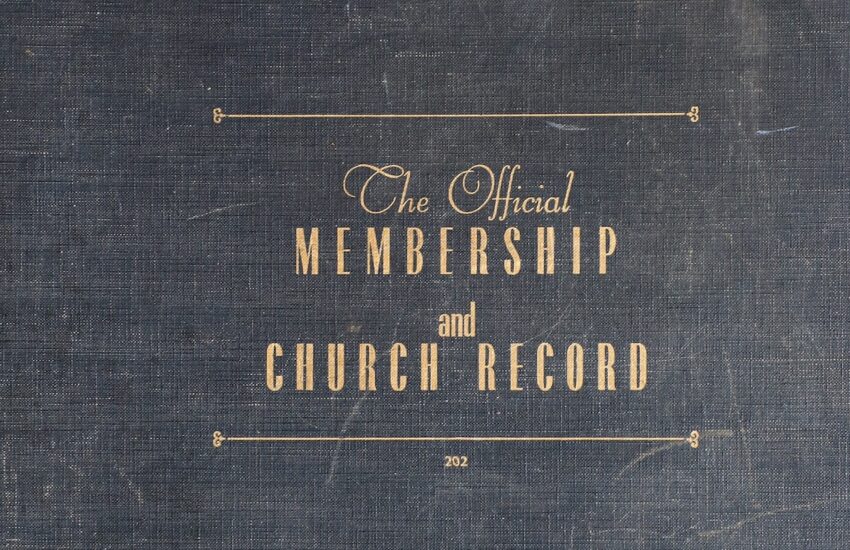Biblical Genres – 7 Rules for Historical Narratives
All right folks, buckle up! We’re strapping on our exegetical boots again and wading into the deeper waters of biblical hermeneutics. More specifically, we’re talking about Biblical Genres—those various forms of literature through which God chose to communicate His Word.
You see, the Bible isn’t just a flat collection of rules and maxims; it’s an anthology of divine wisdom, wrapped in historical accounts, poetry, law, prophecy, and more. If you’re going to make any headway in interpreting it faithfully, you’ve got to know what kind of text you’re looking at. Different genres have different rules of engagement, and getting those rules wrong is how you end up pulling parables like rabbits from a magic hat. The Bible isn’t a choose-your-own-adventure book where you make up the genre as you go.
Today, we’re diving into one of the more obvious genres: Historical Narratives. Let’s break down some rules that will help you read this genre properly.
Rule 1: This Is History. It Actually Happened.
When you read through Genesis, Exodus, or 1 Samuel, you’re not reading fairy tales or myth. These are real events, breathed out by God, that actually happened. It wasn’t a mass hallucination or some grand metaphor. This is crucial to remember because it shapes how we trust the Bible as a historical document that reveals God’s dealings with His people.
For we did not follow cleverly devised myths when we made known to you the power and coming of our Lord Jesus Christ, but we were eyewitnesses of his majesty.
2 Peter 1:16
These narratives aren’t just stories meant to entertain or to be told around a campfire. They are the story of God’s people, but more significantly, they are the unfolding of God’s covenant work throughout history. They don’t just tell us what happened; they tell us why it happened and what it reveals about God’s character, His heart for His people, and His eternal plan for redemption. When we read these historical accounts, we’re learning more about who God is—His faithfulness, His holiness, His justice, and His mercy—as He interacts with a broken world to bring about His purposes.
In modern times, it’s common to hear people try to “explain away” the miracles and supernatural events of Scripture, treating them as if they were mere metaphors or exaggerated retellings of natural events. Instead of taking the Bible’s account at face value, these explanations often reduce the miraculous to something less than divine. Here are a few examples:
- Parting of the Red Sea (Exodus 14): Some claim that the Israelites didn’t really cross a parted sea, but rather a shallow marshland known as the “Reed Sea.” According to this theory, a strong wind could have blown the water back just enough to allow the Israelites to pass. This explanation reduces a monumental display of God’s power to a natural phenomenon, downplaying the significance of God delivering His people by parting a vast body of water.
- Feeding of the 5,000 (Matthew 14:13-21): One common attempt to rationalize this miracle suggests that Jesus didn’t actually multiply five loaves and two fish to feed thousands. Instead, when the boy offered his food, it “inspired” others in the crowd to share their own food, which they had secretly been holding back. This “explanation” strips away the supernatural aspect of the miracle, turning it into a moral lesson on generosity rather than a miraculous act of provision by Christ.
And the list goes on – Jonah and the giant fish, Jesus walking on water, turning water into wine, and even to the virgin birth and the resurrection. In each of these examples, the supernatural is reduced to something ordinary, robbing the narrative of its power and significance. These attempts to rationalize the miraculous strip away the awe and wonder that accompany God’s direct intervention in the world. Rather than seeing God at work, these explanations portray the events of Scripture as mere human inventions or natural occurrences, effectively denying the divine nature of these acts. But the Bible presents these miracles as real, historical events that reveal God’s power, faithfulness, and plan of redemption. To diminish them is to misunderstand the very nature of God’s interaction with His creation.
Rule 2: Historical Narratives Reveal God’s Character and Plan
Historical narratives should be taken at face value—they’re recounting real events. But, here’s the catch: it’s not just history for history’s sake. When you’re slogging through the battles, betrayals, and kingship crises, ask yourself, “What’s this telling me about the God who rules over all history?”
For example, when David pulls off the impossible and takes down Goliath with a slingshot, it’s not an advertisement for a new martial arts technique. It’s an object lesson in trusting God’s sovereignty when the odds are stacked against you. Now, you’re going to want to resist the urge to turn every descriptive event into a life hack for 21st-century living. Just because David slew Goliath doesn’t mean you should be picking up a sling and eyeing the nearest giant. The principle here is faith in God, not the mechanics of rock-throwing.
Rule 3: Know the Difference Between Descriptive and Prescriptive Passages
Here’s a biggie. Descriptive passages tell us what happened, while Prescriptive passages tell us what we should do. Just because something happened in the Bible doesn’t mean it’s an instruction manual for us to replicate.
Descriptive passages simply describe the choices, experiences, or outcomes of individuals or nations, without giving direct commands or instructions – like the choosing of Matthias (Acts 1:23-26), Paul Surviving the Snakebite (Acts 28:3-6), Philip’s spiritual transportation & Peter walking on water, or even the tongues of fire at Pentecost.
Whereas, Prescriptive passages are those that instruct or command behavior. They contain directives, telling us what to do, how to live, or what to believe. These are the “do this” or “don’t do that” parts of the narrative, often found in the context of God’s laws or direct commands from prophets, kings, or apostles – like the Great Commission (Matthew 28:18-20), the Lord’s Supper (1 Corinthians 11:23-26) and the Fruit of the Spirit (Galatians 5:22-23).
When we mix these up, that’s when bad theology—like the prosperity gospel or the name-it-and-claim-it doctrine—starts creeping in. Again, not everything in the Bible is meant to be a “life hack” for 21st-century living.
Rule 4: God’s Covenant Promises Are at Work, Even in the Chaos
The Bible is not random. Through all the historical messiness—the wars, betrayals, and bad kings—God’s plan of redemption is at work. There’s a golden thread running through Scripture, and it’s the story of God redeeming His people through His covenant promises. Whether you’re reading about Abraham or Nehemiah, don’t miss the overarching theme of God’s faithfulness to His people, even when they fall short. Stand on God’s promises.
When reading narratives, don’t go grabbing swords and slinging rocks unless God clearly tells you to. Instead, pull out the principles—like faith, repentance, and obedience—that transcend the details of the story.
Rule 5: It’s All Part of One Big Story
From Genesis to Revelation, the Bible tells one grand narrative: Creation, Fall, Redemption, Restoration. When you’re reading historical narratives, it’s important to place it within this big picture. Every event fits into the greater framework of God’s redemptive plan for humanity, and understanding this helps us interpret Scripture faithfully.
The Bible, though composed of 66 books written by different authors over centuries, is not a random collection of disconnected events, teachings, and prophecies. Instead, it is a unified narrative that tells one overarching story: God’s grand redemptive plan for His creation. Every historical event, every prophecy, every psalm, and every letter fits into this larger framework, and understanding that “big story” is key to interpreting the Bible faithfully.
Rule 6: Look for Typology—Foreshadowing of Christ
Historical narratives often serve as foreshadows of greater spiritual realities fulfilled in Christ. This is called typology. For example, Adam is a “type” of Christ, representing humanity’s failure, while Christ is the “antitype” who redeems what was lost. The Passover lamb foreshadows Christ, the Lamb of God who takes away the sin of the world.
Understanding typology helps us see how God was laying the groundwork for Christ throughout the Old Testament. It’s like reading the first chapters of a story, knowing that everything is pointing toward the ultimate climax—Jesus.
Therefore let no one pass judgment on you in questions of food and drink, or with regard to a festival or a new moon or a Sabbath.
Colossians 2:16-17
These are a shadow of the things to come, but the substance belongs to Christ.
For since the law has but a shadow of the good things to come instead of the true form of these realities, it can never, by the same sacrifices that are continually offered every year, make perfect those who draw near.
Hebrews 10:1
Rule 7: Understand the Historical and Cultural Context
To interpret historical narratives accurately, you need to understand the world in which these events occurred. What was life like in ancient Israel? What customs and societal norms were at play? The Bible was written in a specific time and culture, and immersing ourselves in that context helps us avoid misunderstandings.
Take the parable of the Good Samaritan, for example. Knowing the deep animosity between Jews and Samaritans amplifies the message of radical love for your neighbor. Or think of Ruth uncovering Boaz’s feet—what seems strange to us was actually a culturally appropriate way for Ruth to request Boaz’s protection. Foot washing was a task reserved for the lowest servants due to the dusty roads and sandals worn at the time. But, Jesus performing this act demonstrates profound humility and sets an example of servanthood. Recognizing the cultural significance intensifies the lesson on humility and service.
Without grasping these contexts, we might miss the depth of what God is teaching us.
Conclusion
So, whether you’re reading about David, Moses, or the apostles, remember: historical narratives are not just history lessons—they’re windows into God’s redemptive work. They reveal His character, His promises, and they always point us back to Christ. Don’t reduce these stories to mere moral lessons or action steps for modern life. Instead, see how they fit into the grand narrative of Scripture, which culminates in Jesus.
So go forth now, dear reader, with your Bible in hand and your eyes wide open. When you open to those narrative passages, remember the rules, and read them for what they are: stories that happened, that matter, and that show us the God who never stops working to redeem His people.





